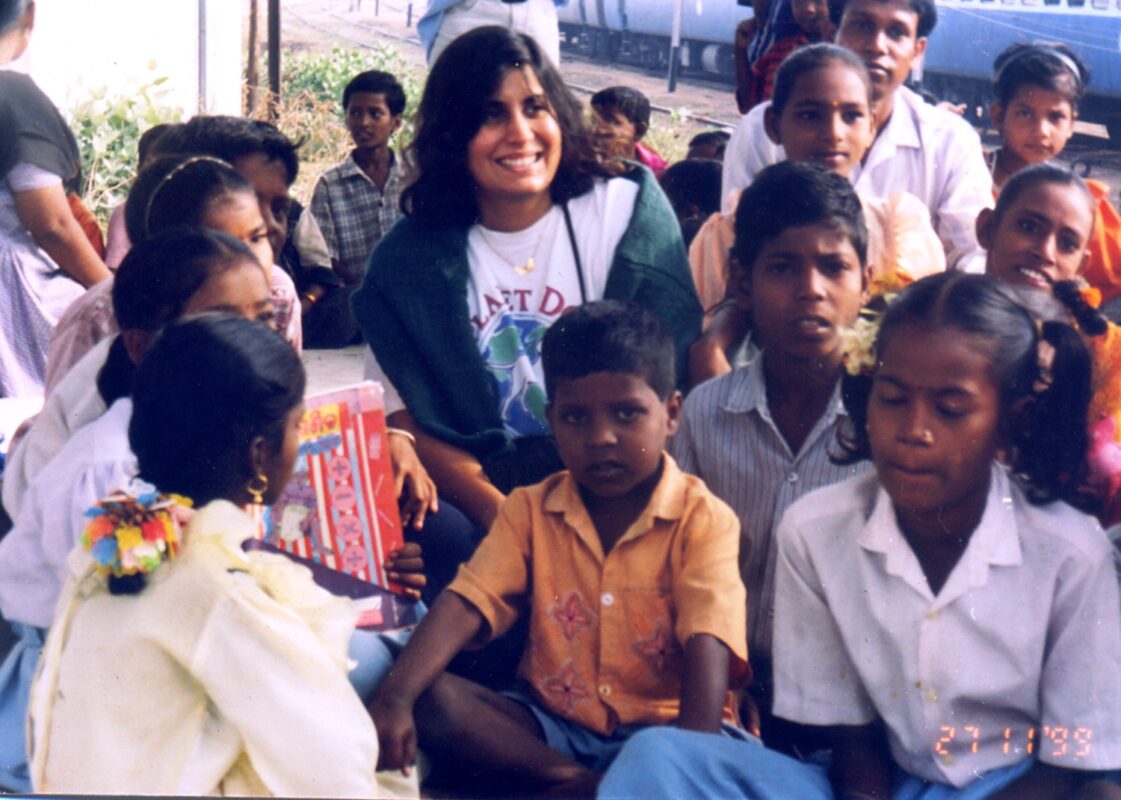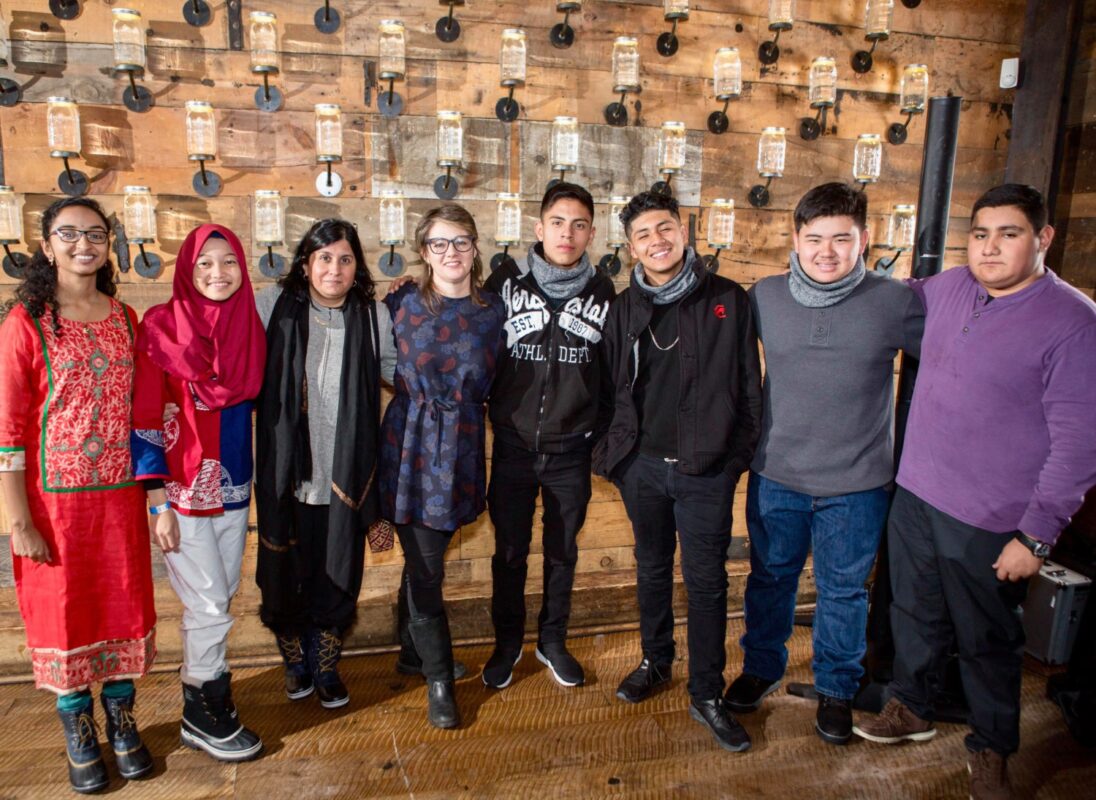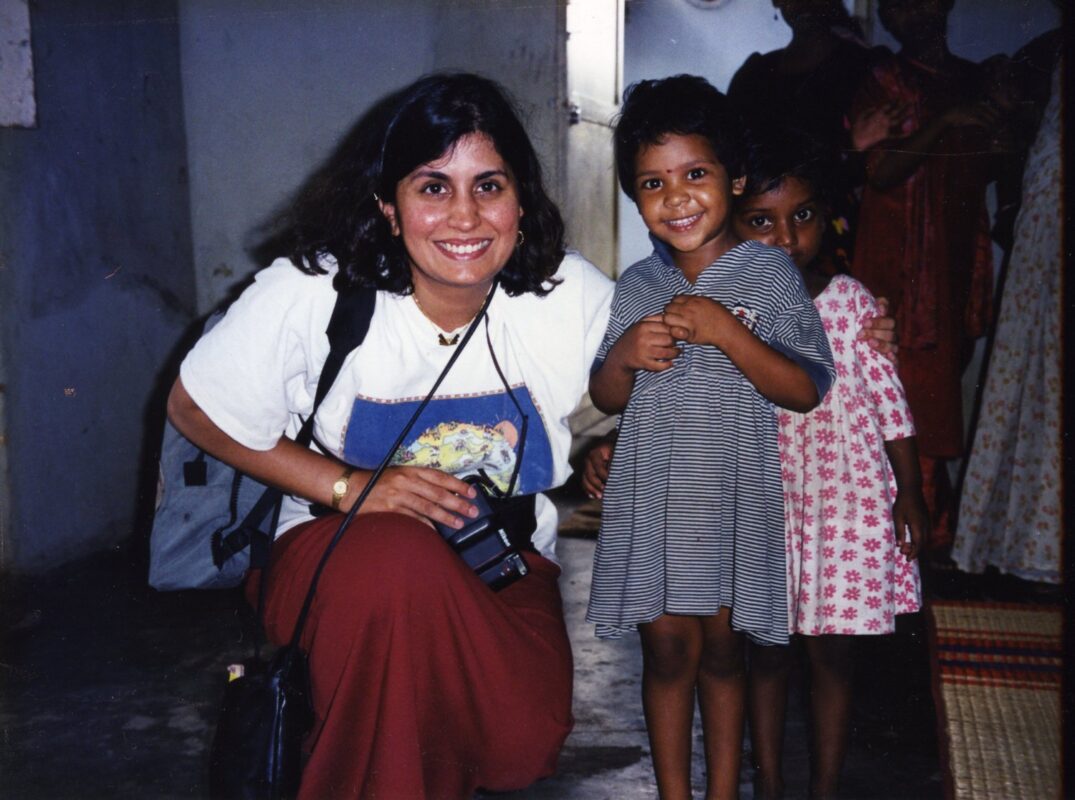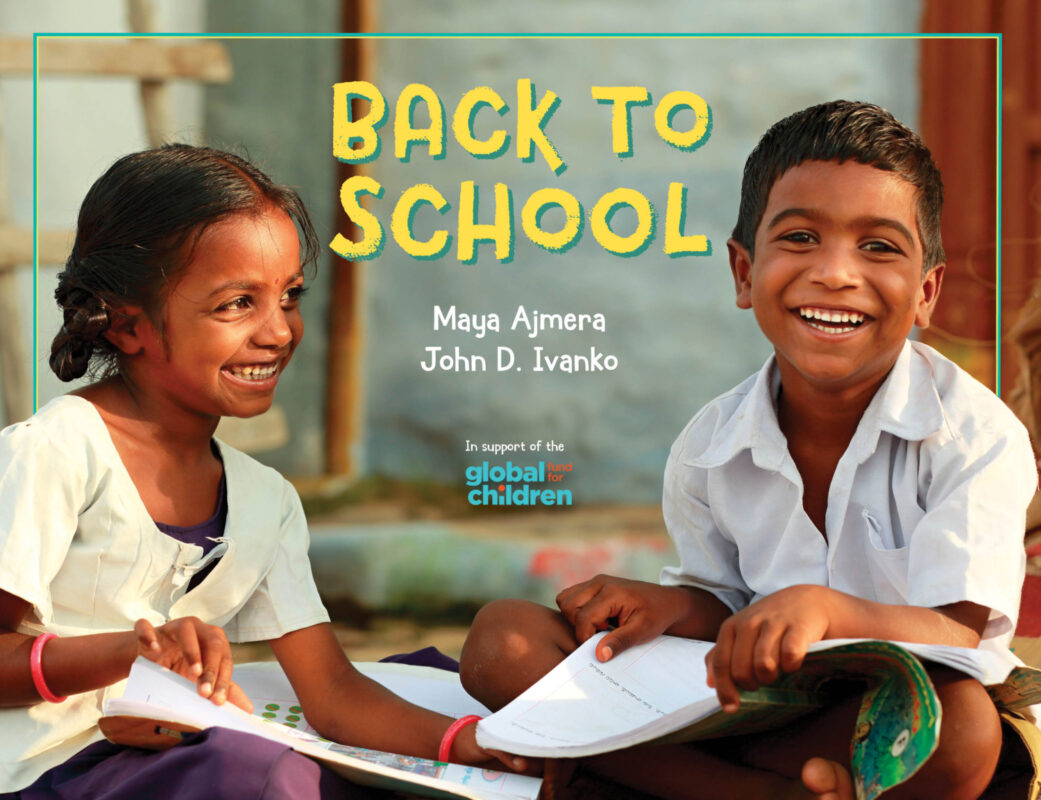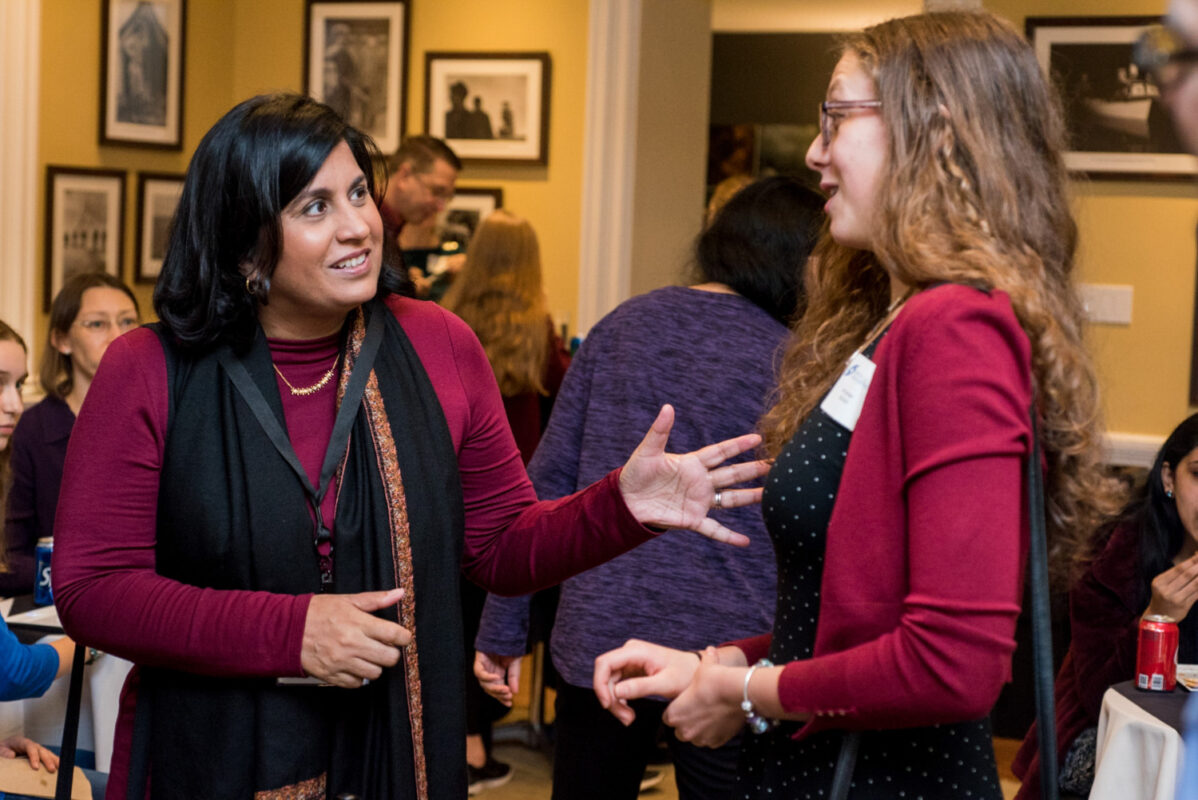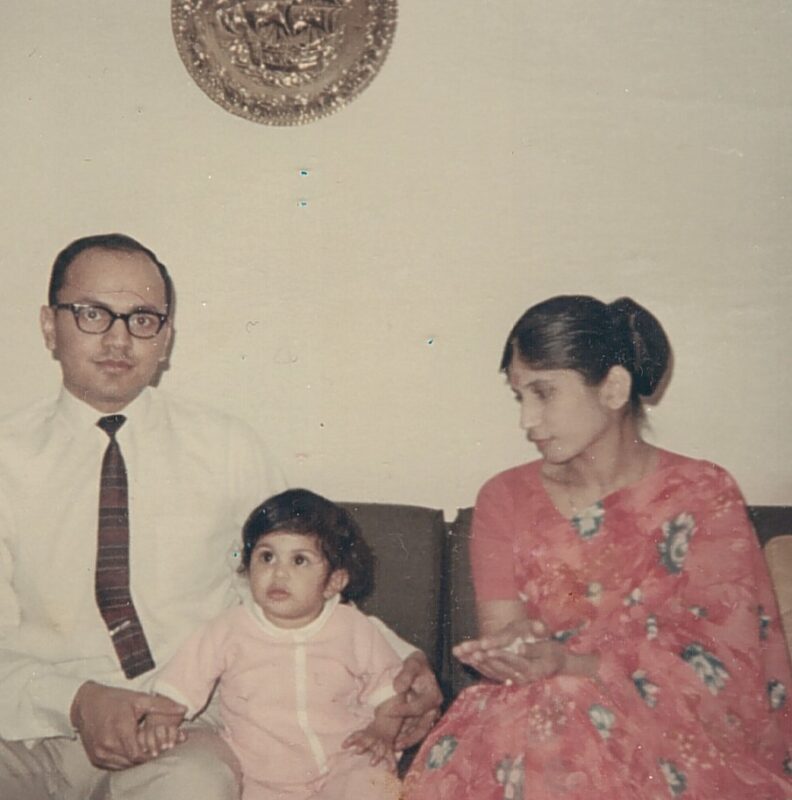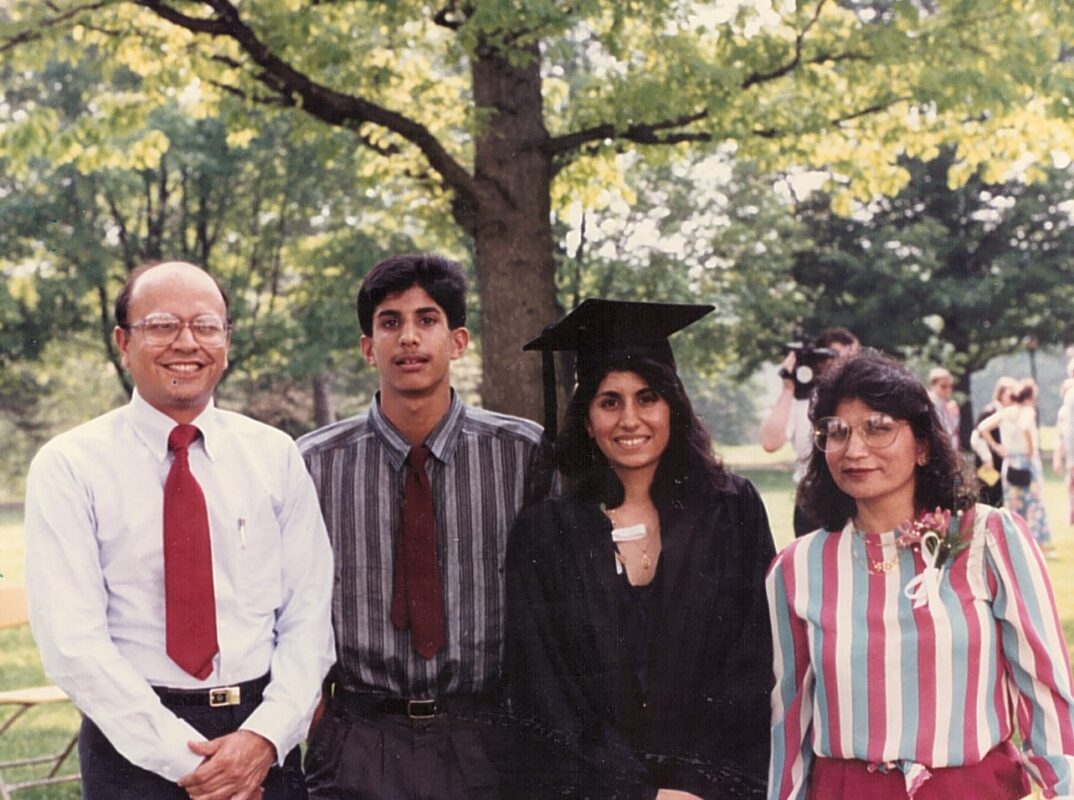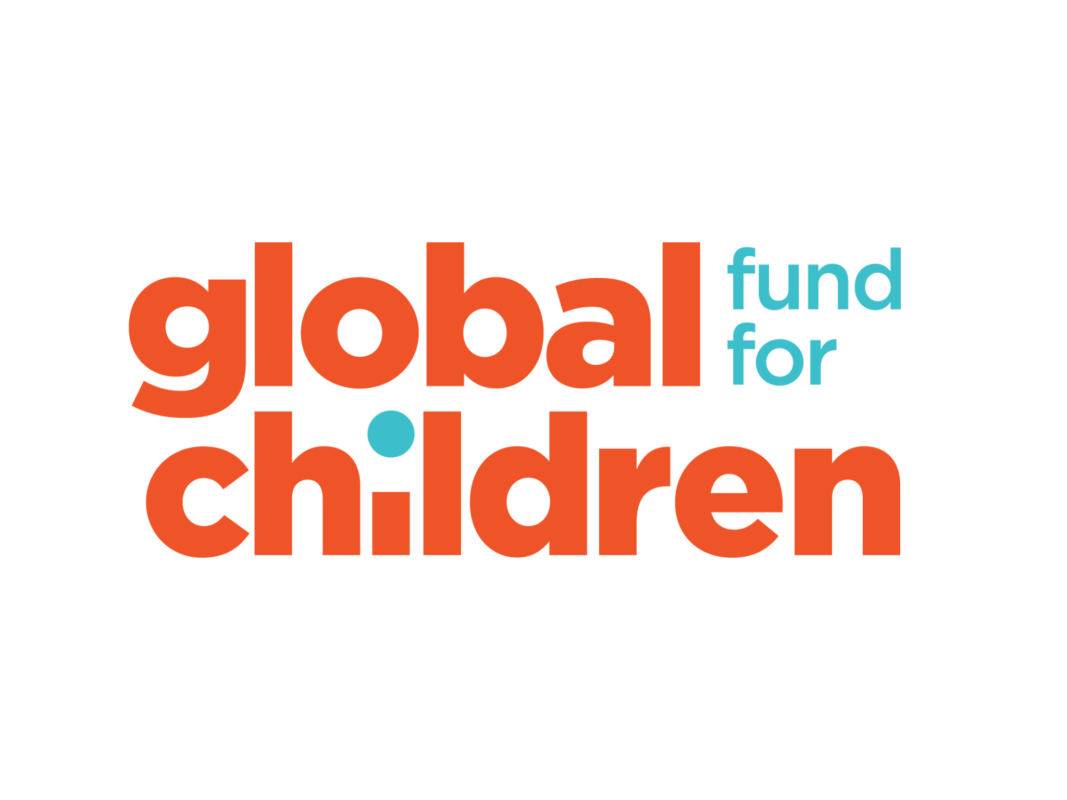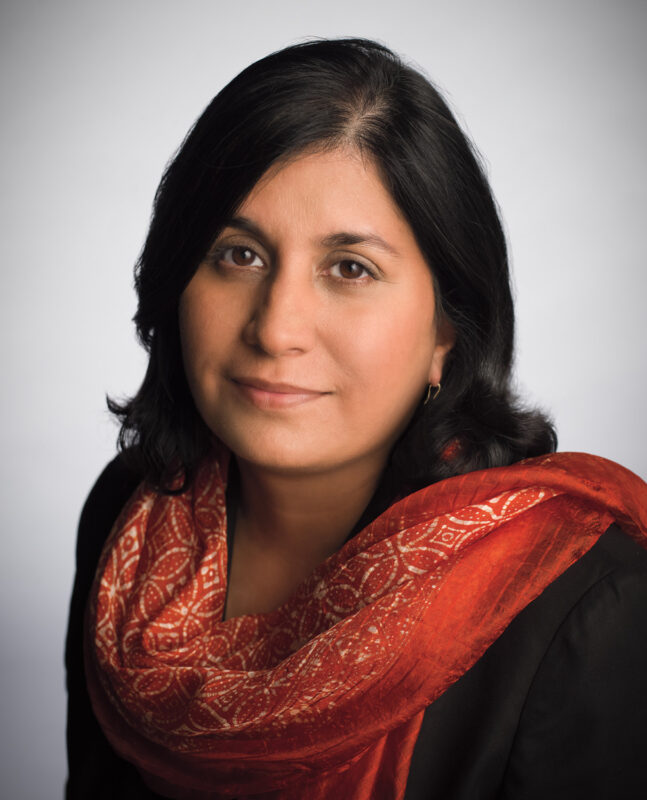MEET MAYA AJMERA, THE PRESIDENT AND CEO OF SOCIETY FOR SCIENCE & THE PUBLIC AND PUBLISHER OF ITS AWARD-WINNING MAGAZINE SCIENCE NEWS AND ITS FAMILY OF MEDIA PROPERTIES. SHE IS ALSO THE FOUNDER OF THE GLOBAL FUND FOR CHILDREN, A NON-PROFIT ORGANIZATION THAT INVESTS IN INNOVATIVE, COMMUNITY-BASED ORGANIZATIONS WORKING WITH SOME OF THE WORLD’S MOST VULNERABLE CHILDREN AND YOUTH.
Who is Maya Ajmera? Define yourself.
Maya Ajmera is a South Asian American woman brought up in Eastern North Carolina. She is the daughter of Indian immigrants. She considers herself a global citizen and is a passionate social innovator. Maya cares very deeply about inequities in the world.
What was your experience growing up as the child of Indian immigrants in North Carolina?
My dad was a professor of physics at East Carolina University in Greenville, North Carolina. He was always very committed to his students. My mother was an Avon lady, and she went door to door selling cosmetics. She was an extraordinary saleswoman and became one of the highest selling sales ladies for Avon on the Eastern seaboard. She won all these awards and I used to go with her sometimes on sales visits. Sometimes I would read a book while she sold the cosmetics, but other times I would watch my mother in the art of selling cosmetics. Our next-door neighbors were one of the first Jewish families in Greenville; he was a professor of German. Our other neighbors were Palestinian and a professor of biochemistry.
In some ways, the academic environment brings many immigrants coming to a college town, but it was also the Deep South. That was not easy at times. I was not the white kid and I wasn't the Black kid. I was the Brown kid, and sometimes my classmates made fun of me thinking I was an American Indian. They would run around, clapping their hands over their mouths as an American Indian. At times I would have to choose which group of friends to be part of.
I have one memory of the Cotillion, a dance where kids were invited every other Saturday evening. I got invited to it, but I never really got asked to dance. I always sat there and sometimes the boys would take pity on me — the Marshals they called them. These were the older boys who invited the girls who weren't getting called on to dance. I think I didn't get called on because of the color of my skin. All in all, I would say that I had a good group of friends and some very nice memories.
“I have to make sure that everything gets done on a personal level for my family, and I am very careful about how I spend my time”
Why did you decide to study science?
South Asian Americans, in my generation, were given narrow choices of what they could be when they grew up. Science was thrust upon me by my parents, but that's because science is what they knew. But they were very openminded in terms of extracurricular activities. Growing up, I played the violin, I was a ballerina and a Girl Scout.
I was curious about science and participated in science fairs from an early age; this really cemented my love for it. I was interested in how science could solve problems in one's community or environment. I wasn't as interested in theoretical problems. So, when I got the opportunity to study the growth of duckweed (which I learned was a feasible source of food), I thought my research could influence world hunger. It was exciting because it was a way, I could make a difference.
For the people who don’t know you, can you briefly describe what the Society for Science & the Public is and its purpose? What does the Society mean to you?
The Society for Science is about the next generation of individuals that go on to become (what I call) the defenders of science. I take great pride in the Society’s role in building the next generation of defenders of science, not only through our competitions and leadership in the sciences, but also through our equity and inclusion programs throughout the United States. That makes my heart swell.
Tell us about your role in Science News and more about the publication.
I am the Publisher of Science News, and my role is to make sure that the newsroom has the resources and capital to produce the best quality, evidence-based science journalism. When I came on board as Publisher, Science News was not in good shape. We were in debt and needed to figure out what we were going to do next. Whether to sell it, shut it down or make it sustainable. Six years later, we are a bullish enterprise. I take great pride in an educational program we created called Science News in High Schools (SNHS), which has not only helped to financially turn Science News around but has also put high-quality science content into the hands of high school students across the United States. In 2015, when we founded SNHS, we were in only 240 high schools; we're now in 5,000 high schools and want to scale that to 10,000. In our current world, science journalism plays a huge part in our democracy. Our citizens need to be able to read factual, evidence-based science journalism. This is absolutely critical in the world, especially now, amid a deadly pandemic.
“One of the things I have had to learn is, "Maya, advocate for yourself."
You are the founder of the Global Fund for Children (GFC), a non-profit organization that invests in innovative, community-based organizations working with some of the world’s most vulnerable children and youth.You are a recipient of numerous leadership awards, including the 2011 Henry Crown Fellowship at the Aspen Institute, the Echoing Green Fellowship, the William C. Friday Fellowship for Human Relations, and the Rotary International Graduate Fellowship. What is the recipe for your success?
- Perseverance and not willing to take ‘no’ for an answer.
- Staying away from people who suck the passion out of you.
- Daydreaming about new ideas and possibilities.
In your opinion, what are the biggest challenges faced by women in STEM that are not typically faced by their male counterparts? What would you suggest we do to address these problems?
First, I think young women need mentors and role models. For example, it is critical that young African American girls see Black female scientists and engineers, or Latinx girls see Latinx scientists and engineers.
Second, we need to provide girls with opportunities in STEM. The organization, Girls Who Code, is a great example of that. How do you create a pod for girls to be in their own space, dreaming about becoming an astronaut or engineer or scientist, and be part of a journey with a group of girls or young women like themselves?
I remember being in my calculus class, comprised mostly of boys, and feeling intimidated to raise my hand. It wasn't until I went to Bryn Mawr College, an all-women’s college, where the idea of raising my hand became the norm. Everybody raised their hand because we were all women and most of my professors were women too. That sort of confidence-builder is critical.
What is the reality of your day to day?
Lots of meetings and interviews, proposals, trying to think about how we raise capital for a new program or current program at the Society. My husband is a lawyer and a professor, and I am a CEO and Publisher. We’re also parents. We both have demanding careers and we are trying to raise our second grader. I feel very fortunate that I have a nanny that supports us, but it is still a lot. When you are at your office, you can concentrate, but at home we are juggling a lot. I am logging onto a virtual conference call with my team, while say, I am trying to set my daughter up on her computer for online learning. It's a lot of multitasking.
Do you have a particular philosophy that guides your career decision?
I would say being open, taking on new opportunities and not being afraid to take risks.
“Staying away from people who suck the passion out of you”
What do you love most about your job? What is the most difficult part?
I love the people I work with. I love our mission. I love that we are making a difference in science literacy. I would say the hardest part is the constant need to raise capital to be able to do the important work. At times it is stressful.
What is one strategy that has helped you grow in your professional ladder?
Serving on boards has helped me grow. As a CEO I report to my board but being a member on other boards gives me insights on other well-respected organizations operate and lead. For me, it is also about being a lifelong learner. It is important to be open to new challenges and take risks. A recent example was when COVID-19 hit, and the Society for Science & the Public had to go completely virtual with all our programming. Instead of sitting on it, we pivoted and found new, creative, and effective ways to do things virtually.
What do you like to do in your spare time?
I love to read with my daughter and husband. These days, I am cooking more. I have a great Pilates instructor that I work out with, and I am catching up on some old TV shows like The West Wing. I never have watched that series before. Once upon a time ago, my husband and I really enjoyed fine dining and going to the movies. I am also a children’s book author — this effort keeps me sane. I have cowritten over twenty titles including Children from Australia and Zimbabwe, Faith, and To Be a Kid.
What are your plans?
To continue to enact change and make the world a better place. I don't see myself not ever wanting to be in a place where I am not making an impact.
Who are you personally and who are you professionally?
I am pretty intense in both my work and home settings. I think in my personal life, the intensity goes down, but it is different. I have to make sure that everything gets done on a personal level for my family, and I am very careful about how I spend my time.
What situation marked your life in a way that prompted you to be who you are today?
I began to steer more toward public service and developing my passion for expanding opportunities for young people after college when I received a fellowship that allowed me to travel across South and Southeast Asia. During those travels, I had what I call my moment of obligation after encountering a group of children being taught at a makeshift school on a train platform in India. This moment has stuck with me and ultimately stirred me to start the Global Fund for Children (GFC), an organization dedicated to supporting innovative community-based organizations serving the most vulnerable children and youth. I built GFC from the ground up and spent 18 years leading it.
There is still a glass ceiling for women in the world, fewer opportunities, jobs that are underpaid, just for the fact of being a woman. Have you experienced the glass ceiling? If yes, what are the biggest challenges you have faced and how have you overcome them?
At the Global Fund for Children, the glass ceiling was just my own ceiling in some ways. As the founder and CEO, you are an entrepreneur, and your destiny is in your own hands. But in terms of the glass ceiling, I was one of the first South Asian women in 1993 to found a global nonprofit. That is shattering some pieces of glass, right?
I would say the other glass ceiling I have felt is one where I have been overlooked, whether it be by the media or being nominated for awards, for example. Sometimes I have felt invisible. There have been times when I have seen men getting through the door of funding opportunities that I could not get through. That was painful, and it has not been until recently that I've really advocated for myself. One of the things I have had to learn is, "Maya, advocate for yourself."
Who is a woman that you admire the most and why?
So, there are quite a few. I admire my mother wholeheartedly. As an immigrant woman, who became a world-class entrepreneur, my mother has always inspired me. I also admire quite a few activists who have made the world a better place. I think of historical figures like Rosa Parks and Ruby Bridges. But in today's world, I think of my late mentor, Margaret Holiday, who I did science research with at Bryn Mawr College. She was extraordinary.

